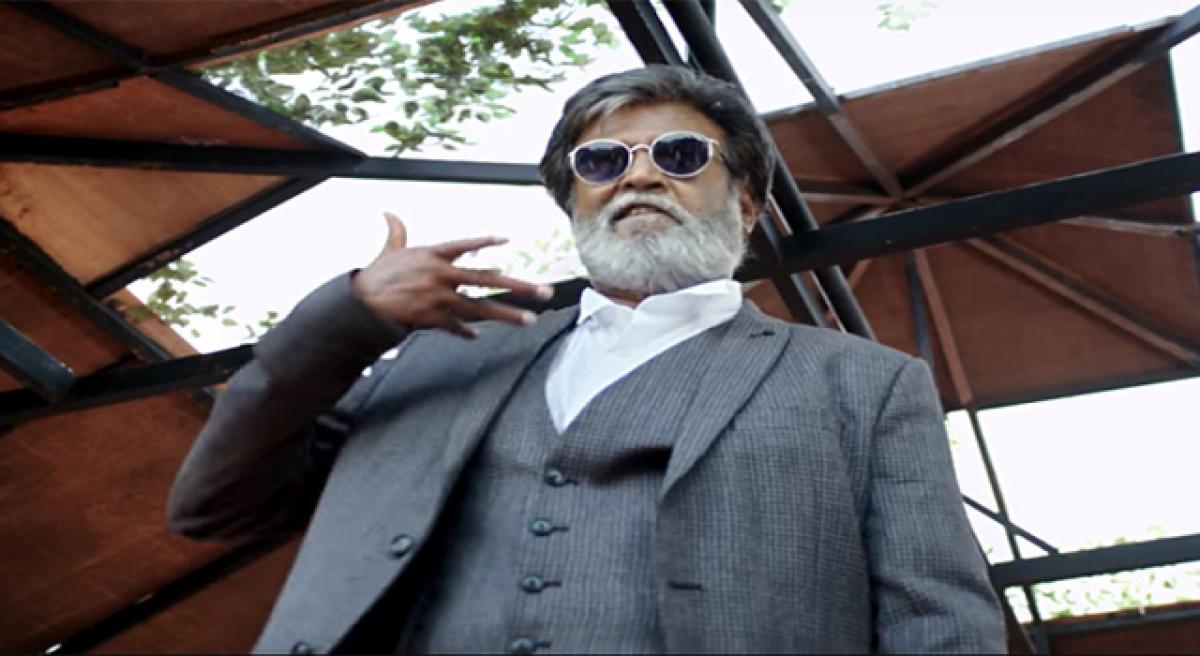Live
- Malluravi is the Congress candidate who filed nomination in Nagar Kurnool
- Hanuman Jayanti 2024: Top Wishes, Quotes and Messages for Lord Hanuman's Birth
- Is the shooting of Ram Pothineni’s ‘Double iSmart’ really stopped?
- Ways to Please Lord Hanuman for Protection and Prosperity
- Kavuri Lavanya Participates in Nomination Process of Chintalapudi Congress MLA Candidate Eliza
- Are ‘Pushpa 2’ Makers Releasing the FIRST Song from Allu Arjun's Film on THIS Date?
- Cyberabad SOT bust prohibited cotton seed racket
- Police impose traffic restrictions for Hanuman Jayanti Yatra today
- BS Maqbool's son Akhil Ahmed Conducts Election Campaign in Support of YSR Congress Party
- World book and copyright day 2024: Celebrating reading and literature
Just In

It is not often that a 65-plus cinema star, with a salt-and-pepper beard and a carefully stylised image to go along with it onscreen, whips up an unprecedented frenzy as one of his films is about to get released.
It is not often that a 65-plus cinema star, with a salt-and-pepper beard and a carefully stylised image to go along with it onscreen, whips up an unprecedented frenzy as one of his films is about to get released.
Even in the strongly male-dominated world of Indian cinema, where 40-plus actors are shown attending college and the 50-plus heroes manage to pair with heroines half their age, it is a trend that is unmatched, for its sheer endurability and appeal.
This exalted status, hence, is the sole prerogative of Shivaji Rao Gaekwad, popularly known as Rajinikanth – a star-turned-brand, renowned for his commanding screen presence and ever-enduring attraction at the box office.
From the time the teaser promo of his current release Kabali was floated over various media platforms a few months ago, Rajinikanth fans, who have untiringly seen his 170 films across many languages over four decades knew they were in for something special.
While that would be decided over the weekend after the film gets released, it is interesting to examine how and why Rajinikanth has retained the numero uno slot, unchallenged over the years. Unlike many of his seniors in southern cinema, who had carefully built images of being featured as gods, mythological characters, lover boys and creative people, Rajini, as he is affectionately called by legions of fans, took the contrarian, yet a sure-fire commercial route to the top.
Graduating from minor roles to an arresting villain in the black-and-white era of the mid-70s as he was introduced, he quickly latched onto cashing in on his surging popularity as the fans wanted more of him and his stylised gimmicks.
It surely goes to his credit that he managed to carve a niche for himself with ordinary looks and an indistinguishable personality, which worked out more in his favour as his USP among the masses who identified with him and cheered him consistently.
While he stabilised on his stunts and flashy performances in the earlier part of his career, he developed his image on a wide variety of works in the latter part of his screen life, helmed in by leading directors like K Balachander, who introduced him, Mani Rathnam who blended his acting and heroic traits and Shankar who lent him a demi-god status, to the latest director, the young Pa Ranjith who has reportedly combined the old and the new heroisms of the star in Kabali.
This is in itself a great case study for aspiring heroes to imbibe the methods which Rajini used to build on his image of a never-before seen entertainer, more on the lines of an anti-hero often than the do-gooder protagonist.
The Indian advertising world has been quick to cash in on the mania that Kabali has unleashed in the global market, with the film being dubbed not only in Indian languages but also in Malay, Thai and Chinese.
The pundits have termed it ‘surrogate endorsement,’ in itself a path-breaking trend, as the hero himself has not endorsed the product or service in question. Rajinikanth, thus, is an inscrutable combination of box-office appeal and unbridled popularity, which seems to keep growing among the film-loving crowds of India.

© 2024 Hyderabad Media House Limited/The Hans India. All rights reserved. Powered by hocalwire.com







